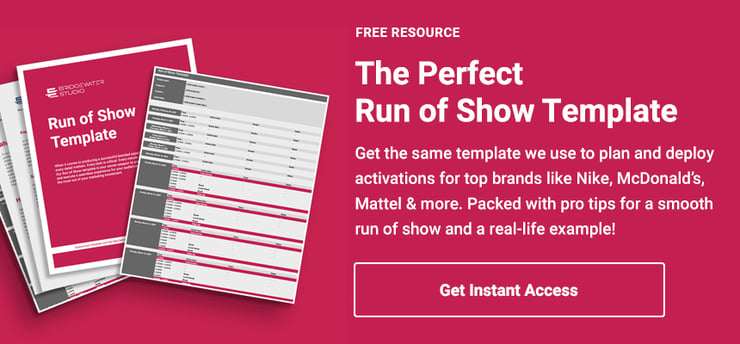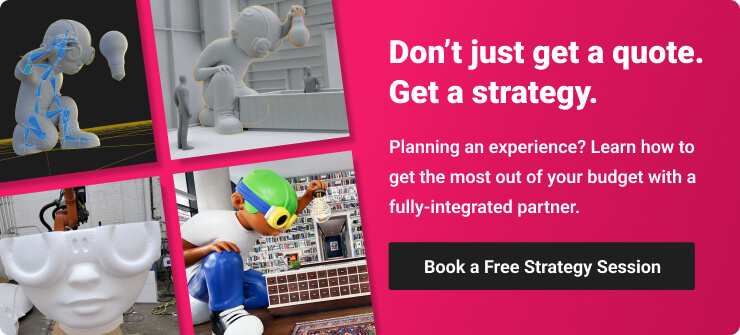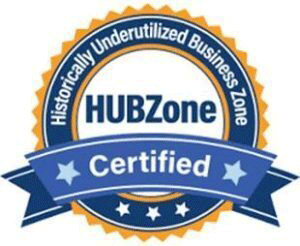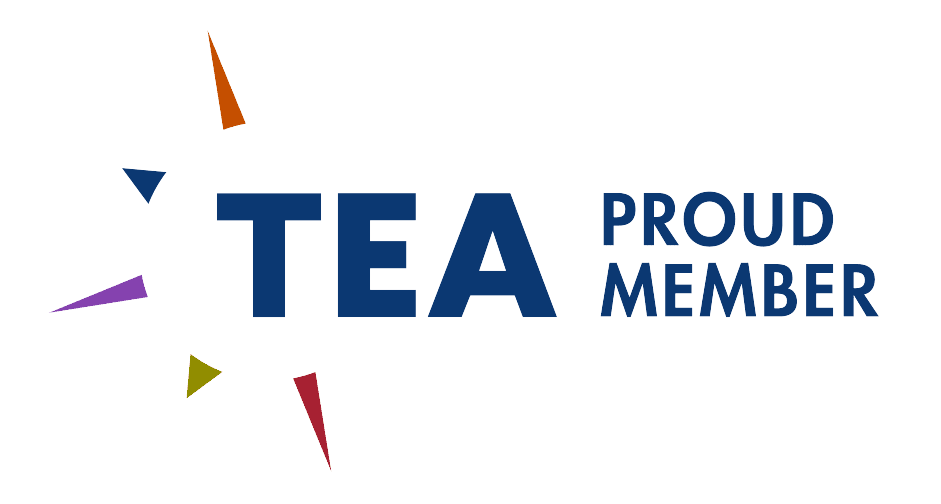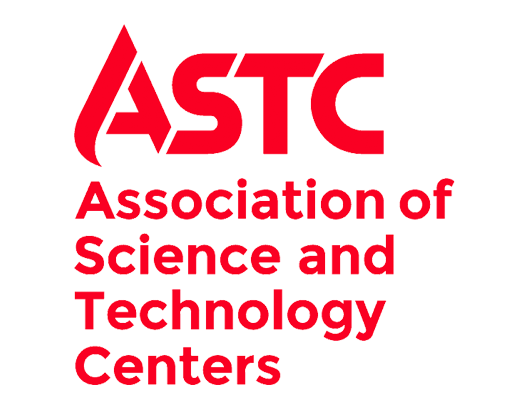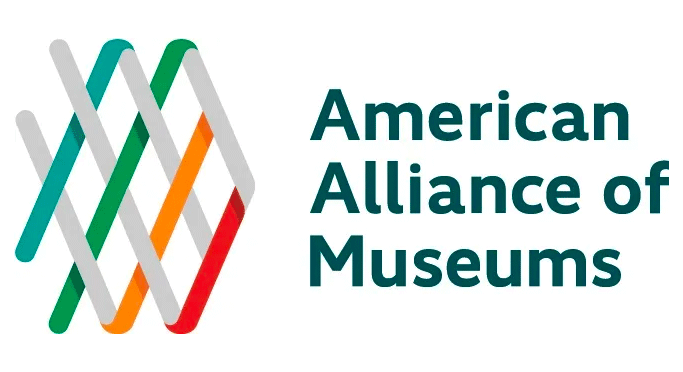Experiential Design & Fabrication
THE ESSENTIAL GUIDE TO EXPERIENTIAL MARKETING CAMPAIGNS
How to Plan, Design, and Execute Successful Brand Activations
Top brands are well-known for connecting with customer audiences through bold and engaging marketing experiences. Smaller brands have followed their lead in recent years, realizing the many benefits of live, face-to-face interactions with consumers in an increasingly digital world.
Often referred to as “brand activations,” the impact of these experiential marketing campaigns isn’t limited to audience exposure at a single event. Rather, a successful activation can make waves throughout the press, social media, and popular culture at large.
However, it takes much more than a clever concept for a brand activation to achieve viral success. Experiential marketing is all about creating memorable, in-person interactions between a brand and its customers—and that requires careful planning, design, execution … and managing a lot of moving parts.
Brands new to experiential marketing will quickly learn that activations are complex projects with many challenges and logistics. The journey from initial ideation to final installation can be filled with unexpected issues, unplanned mistakes, and unnecessary stress. Or, it can be a well-informed, streamlined process that optimizes your budget, timeline, and results.
In this guide, we’ll detail the keys to planning and executing a successful experiential marketing campaign from beginning to end, so your brand can get the most out of your next activation.
Contents
Introduction: Experiential Marketing Basics
Different Types of Experiential Marketing
Experiential Marketing Techniques
How to Plan, Design, and Execute Successful Brand Activations
How To Measure Experiential Marketing
Examples of Highly Effective Experiential Marketing
Investing in Experiential Marketing
What Is Experiential Marketing?
Experiential marketing connects brands with their audiences through in-person experiences. The goal is to create an immersive interaction—and a memorable impression—that traditional marketing channels simply can’t deliver. Experiential marketing can be a highly-effective way to build positive brand awareness, promote products, support a cause, and more, by engaging both new and existing audiences.
What Is Brand Activation?
Brand activations are promotional experiences that are the culmination of experiential marketing campaigns. In other words, a brand activation is the “main event.” Examples include pop-up activations that give away free samples, retail activations that offer customers a VIP experience, trade show booths that let customers demo products, interactive museum exhibits, and larger-than-life sculptures in public spaces. Depending on a brand’s goals, activations may be designed to help promote a new product or service, attract customers, increase lead quality, improve brand awareness, and more.
What Is An Experiential Marketing Campaign?
An experiential marketing campaign supports a brand activation before, during, and after an event or experience. It begins with an experiential marketing strategy, which will take several factors into account, including customer research, stages of the customer journey, industry trends, and more, along with the desired outcome a business wants to achieve. The execution of an experiential campaign may include both traditional and non-traditional marketing tactics such as email, social media, content creation, digital marketing, and PR.
What Is Experience Design?
Experience design is the practice of planning and coordinating customer interactions with a brand, both online and offline. For experience design to be successful, a brand must take an empathetic view of its audience and reverse-engineer the whole of their experience. Naturally, experience design plays an essential role in experiential marketing campaigns and brand activations.
Common terms associated with experience design include:
- User Experience (UX) - The design of products that provide meaningful experiences to users
- Customer Experience (CX) - The holistic experience that a customer has with a brand
- Service Design (SD) - The use of the customer journey map to optimize and ensure there is a consistent experience for customers
- Brand Experience - All of the interactions and touchpoints that a customer has with a brand
Experience design includes digital components, such as a brand’s website or app, as well as physical components, such as product and packaging design, or the layout of a retail store. Examples of great digital experience design include the usability of apps like Airbnb or Google Maps. Examples of physical experience design include the carefully planned customer experience within the Apple Store.
Experience design also includes human interactions, such as customer engagement with a support team or customer success representatives. All of the above may be incorporated into an experiential marketing campaign, placing a great deal of importance on successful experience design.
What Is Experiential Design?
Experiential design refers to the building of temporary or permanent branded environments, for the purpose of promoting a brand, conveying a message, educating people or otherwise engaging an audience within a fabricated setting. A few different types of experiential design include:
- Exhibition Design: Exhibitions tell stories through signage, displays, and multimedia, such as limited-time exhibits at galleries and museums.
- Environmental Graphics: Environmental graphics are displayed in commercial environments, themed environments, corporate interiors, public spaces, and more. These wall graphics and signs can be informational, educational, promotional, or purely entertaining.
- Art Installations: Art installations can range in size, scale and location—from corporate sculpture to outdoor art exhibits.
The best experiential design encourages positive experiential interactions, which leads to valuable results for brand activations—visitors tagging the brand in social media posts, sharing photos and videos during an activation, promoting the brand through word-of-mouth, and more. These unsolicited, organic actions are powerful ways for brands to build trust with audiences, and are a unique benefit of successful experiential design.
Experiential marketing can be a highly-effective tool for brands of all sizes, in just about any industry—but there’s no one-size-fits-all solution. When it comes to experiential marketing activations, there are many applications to choose from. Depending on the goals, budget, or needs of a brand, an activation could be a pop-up that lasts one day, a longer exposure at a multi-day festival, or even a seasonal or semi-permanent activation. Experiential marketing activations are also evolving to include hybrid or virtual components, giving brands more flexibility and creativity than ever.
13 Examples of Experiential Marketing
Examples of experiential marketing activations include:
- Pop-Up Retail Spaces
- Store-in-Store Activations
- Product Releases
- Mobile Experiences
- Classes and Workshops
- Contests or Giveaways
- Art Installations
- Photo Ops
- Bar or Restaurant Takeovers
- Trade Show Booths & Exhibits
- Guest Speaker Events
- Tastings or Samplings
- Charity Events
Brand activations can be stand-alone or coordinated, multi-location experiences. They can also tie into larger cultural events such as the SXSW Music Festival, the Super Bowl, or International Fashion Week.
Experiential marketing activations are exciting and full of opportunities. However, without direction, they can easily become unfocused and overcomplicated. That’s why early planning and goal setting is essential to a successful brand activation.
In the ideation stage, brands are often consumed with concept development—but it’s also the right time to focus on the desired outcome of an event. This can include goals such as collecting leads, obtaining product feedback, increasing brand awareness, and much more. Goals should also guide strategies for promoting and measuring the success of an experiential marketing campaign.
The earlier a brand defines the desired outcomes for an activation, the more focused the process will be at every stage—from pre-activation planning and promotion to post-activation follow up. Here are common experiential marketing techniques to consider when mapping out a brand activation project:
Pre-Activation
- Promote the event through press releases, advertising, social media, email marketing, posters, mailers, and more
- Partner with influencers, public figures, and non-competing brands to promote the activation
- Get listed in industry newsletters and emails about the activation
- Create and promote branded hashtags for social media
During Activation
- Facilitate live streams and invite people from all over the world to attend virtually
- Give away free items, swag, or samples
- Offer interactive activities or games
- Have customers opt-in for post-activation follow-up
- Set up dedicated areas for taking photos and videos
- Encourage sharing of images, videos, and news on social media
- Have employees ask questions and engage with attendees
- Run tutorials or Q&As about products or services
Post-Activation
- Follow up with attendees through social media and email with surveys, questions, or offers
- Update customer information with data collected at the event
- Post photos and videos for attendees to engage and share
These are only a few of the experiential marketing techniques brands can use to achieve specific goals before, during, and after an activation. The key to a focused campaign is to clearly define goals early in the process, and to choose the techniques best-suited to reaching them.
As previously mentioned, the success of an experiential marketing activation often has little to do with the initial concept. Even a modest brand activation can quickly become a complex project with challenging logistics and multiple stakeholders and vendors with competing priorities. Indeed, the success of a marketing activation has everything to do with the project process.
Avoid the common issues, traps, and mistakes that can turn your big idea into a big headache by partnering with a full-service experiential design and fabrication company, and following a battle-tested experiential marketing process that includes the following keys to success…
Planning
A robust activation plan acts as the backbone of the project, keeping everything on track and on budget. It facilitates teamwork and keeps the flow of the project going. Usually, the planning stage of the process includes:
- Programming Strategy - Programming is the core of an activation and includes the overall message, objective, and goals
- Budget - The development of a budget is important to understand the scope of the activation and must be as realistic and accurate as possible
- Timeline - The desired time frame and timeline of the project set the pace of the entire process. Similar to the budget, this must be realistic
- Design Concepts - Early design concepts can be simple, including examples, mood boards and other inspiration
- Design Feasibility - Brand activations can be bold and over-the-top, but only if they can actually be created within timeline and budget parameters (and engineered within the laws of physics)
- Permitting - Determine permitting requirements for staffing, installation, and other on-site needs as early as possible
- Logistics - Brand activations require high-level project management skills, from shipping to storage, installation to removal, coordination of staff, vendors, talent, and more
- Venue Selection - The venue must also be identified during the planning process, if not already determined. A change in venue can have a drastic impact on timeline and budget
The planning stage often reveals how challenging a brand activation project will be. An inexperienced brand can easily develop an unrealistic budget or concept, and the earlier this is addressed, the better. As a project moves forward through design, visualization, fabrication, and installation, careful planning will pay major dividends at every stage. This is why many brands choose to bring in a strategic partner, such as an experiential design and fabrication company, to lend their expertise in the planning phase.
Who To Hire
Experienced brands know that marketing activations aren’t easy to pull off. So, instead of attempting to manage the project on their own, they turn to specialized agencies, studios, and producers for help. An external partner can assist with project management, event planning, the coordination of vendors, and more. While this level of support can give brands the expertise they need to create a successful activation, not all services are the same. When hiring an experiential marketing agency or event marketing agency, it’s critical to understand what capabilities they offer, what key responsibilities they outsource, and who will be performing the work at every stage.
When hiring a partner for an experiential activation, choices include:
Experiential marketing agencies: Experiential marketing agencies specialize in various aspects of in-person, branded experiences. Some may develop concepts and subcontract to build and deliver physical components, while others may have some in-house capabilities.
Event marketing agency: Similar to experiential marketing agencies, event marketing agencies can help plan and manage brand activations, and may also coordinate vendors for the creation of any physical components.
Producer: Similar to a project manager, Producers can help brands by overseeing the timeline, budget, vendors, and more. Many agencies and fabrication companies have their own project managers or producers.
Full-service design and fabrication company: A multidisciplinary, experiential design and fabrication company specializes in taking marketing activations from start to finish, with end-to-end services for planning, design, fabrication, transport, installation, and project management. The best design and fabrication companies will have advanced CNC services, 3D printing capabilities, and all the necessary engineering, carpentry, finishing, and other skills required to complete a project under one roof with a single point of contact.
Be sure to ask the right questions when hiring a design and fabrication company, an event marketing agency, or an experiential marketing agency. The success of your event activation will be in the details, and you’ll be trusting an outside team to deliver on every last one.
Design and Production
At this stage, a concept will progress to design sketches, material choices, and engineering considerations. Here, design and production teams must preserve the integrity of the concept, while striking the right balance between budget, timeline, and a number of creative options, ranging from surface finishes to advanced interactive functionality. A partner with 3D visualization capabilities can provide incredibly accurate renderings that allow for many variables to be considered before production begins.
The production of physical components for a brand activation can require a variety of skilled trades and specialized equipment, which can be difficult to seamlessly coordinate. With multiple points of contact and limited accountability, this is where project management can become truly challenging. Look for a partner who owns as much of the process as possible, so they can maintain control, anticipate problems, and respond quickly to issues.
The best design and fabrication companies won’t just manufacture the physical components for an activation either—they will think through shipping constraints, safety concerns, and other details that should be factored into build quality.
Activation
While the term “brand activation” describes a type of experiential marketing event, “activation” also refers to the culmination of the project process—when the event finally comes to life.
This activation phase of a marketing experience includes the shipping and installation of the physical environment, management of staff, coordination of on-site vendors, and many other last minute details. The installation process alone can take several days for complex activations, with brands and their external partners managing a frenzy of tightly-scheduled activities. Needless to say, an experienced partner with excellent project management skills, who has planned for this moment since the early stages, will be an extremely valuable asset.
Essential details during the activation stage include:
Run of show schedule: A run of show schedule is a living document that serves as the single source of truth for all activation duties. Evolving up to and through the activation, this asset acts as the master schedule for the event and maps out every detail, from the arrival of the installation team to the final removal of the activation. This choreographed order of operations is critical for leading a successful activation, regardless of size.
Shipping and set up: The shipping and setup of the activation can get expensive, depending on how far an activation needs to travel. For mobile activations, additional considerations should be taken during the design and build stages to account for transport, storage, security, and durability.
Storage: Merchandise, promotional materials, uniforms, and other items that require transport and storage must be factored into a brand activation. Companies with products that are fragile or easily compromised, such as t-shirts that may get wrinkled, should consider the need for additional items, such as an iron or steamer for the event. High-value items may warrant additional security to ensure safe storage.
Staffing considerations: Brands may need to book and coordinate talent or hire temporary staff and security to support their activation. This may also include coordinating uniforms and costumes, and obtaining insurance.
Equipment: Installation for an experiential marketing event may require supporting equipment or rental gear, such as sound, lighting, mics, and more.
Permitting: For many venues and public spaces, permits will need to be secured well in advance of the event.
In the activation stage, trust a partner with extensive experience in the on-site management of marketing activations. They will create, own, and abide by a comprehensive run-of-show schedule designed for success, and will be prepared to meet any unexpected challenges with immediate solutions.
What makes an experiential campaign successful? Before, during, and after a marketing activation, there are plenty of definable moments and measurable actions that can serve as valuable indicators of audience intent and sentiment. These key indicators are important to define as early as possible and can be organized by the stages of the customer journey:
Awareness - The awareness stage, when customers encounter a brand for the first time, can provide insight into overall brand perception and the effectiveness of marketing channels like social media.
Interest - As buyers consider the benefits of a brand’s product or service, brands can measure their interest through conversions on trials, sign-ups, and other methods of voluntary engagement.
Decision - At the decision stage, customers make measurable commitments through purchases.
When it comes to experiential marketing, it’s also important for brands to make their goals as specific as possible. Specific, actionable goals, also called “SMART goals,” keep experiential activations focused on a desired outcome. Both quantitative and qualitative methods should be used in measuring results, with the purpose of delivering valuable insights—not just anecdotal accounts of “how it went.”
Qualitative
Qualitative goals are subjective and cannot be measured with numbers. Based on observations and documentation from staff, these objectives can include:
- The effectiveness of the location
- How customers heard about the activation
- Visitor flow through the space
- How much time was spent in the space
- The sentiment or mood of the consumer
- Additional staff insights, such as what they heard customers say, etc.
While it may be challenging to gauge success on feeling and sentiment alone, qualitative goals can help provide insight into the customer mindset throughout an activation.
Quantitative
Quantitative goals can be assigned a numerical value. These variables can tell you "how much," "how many," or "how often,” and can include:
- Social media engagement (number of posts, hashtags, likes, shares)
- Conversions (sign-ups, purchases, or other commitments)
- Traffic (number of visitors, time spent)
- ROI, measured through discount codes and offers that track after-event purchases
When it comes to reporting on the results of experiential marketing campaigns, brands with SMART goals and marketing software that can measure their pre-defined key performance indicators (KPIs) will have a distinct advantage.
Top brands like Red Bull and Facebook set the standard for memorable experiential marketing events on a grand scale. Well-known examples, ranging from Red Bull helping to set the world record for the highest skydive to Facebook’s successful IQ Live that provided an in-depth tutorial of using the product for business, are a great source of inspiration.
Examples of successful experiential marketing campaigns:
- Elephant Car Wash with faux bird droppings handouts that were actually business cards for their services
- Shedd Aquarium’s 12-foot-wide amphibians suspended above shoppers at the Water Tower Place Mall in Chicago
- The warm wishes blow dryer from Drybar pop-up experience on the streets of NYC
- IKEA’s DIY restaurant and cafe dining event that featured professional chefs
- The Violet Hour interior redesign for NBA-AMEX events in Chicago
- Benefit Cosmetics National Brow Day Stunt one-day event where advocates helped break a Guinness World Record for the “Most People Filling in their Brows Simultaneously.”
- Luke’s Diner takeover limited-time pop-up experience to promote Netflix’s Gilmore Girls reboot
- The Lean Cuisine in-person and virtual #WeighThis challenge pop-up experience
In each example, the key to the success of the activation is in a meticulous process that preserves a unique, engaging concept from ideation all the way through to the live experience.
Every brand wants to engage its audience more effectively, and experiential marketing campaigns provide the solution. Although these projects can be intimidating, the right partner will own every step of the process and deliver a seamless, stress-free activation designed to get the most out of your investment. From brilliant concept to flawless execution and everything in between, brands that work directly with a full-service experiential design and fabrication company will leverage the benefits of creative problem solving, technical wizardry, and expert project management skills with a single partner.
To learn how a full-service design and fabrication company can take your next experiential marketing project to the next level, schedule an introduction to Bridgewater Studio today and receive a free project plan that sets your brand up for success from the start.
Have an experience in mind?
Here are 3 easy ways to get started...Explore Examples
View our project portfolio for ideas, inspiration, and helpful information.
Ballpark Your Budget
Use our Estimation Agent to see how much your next project might cost.
